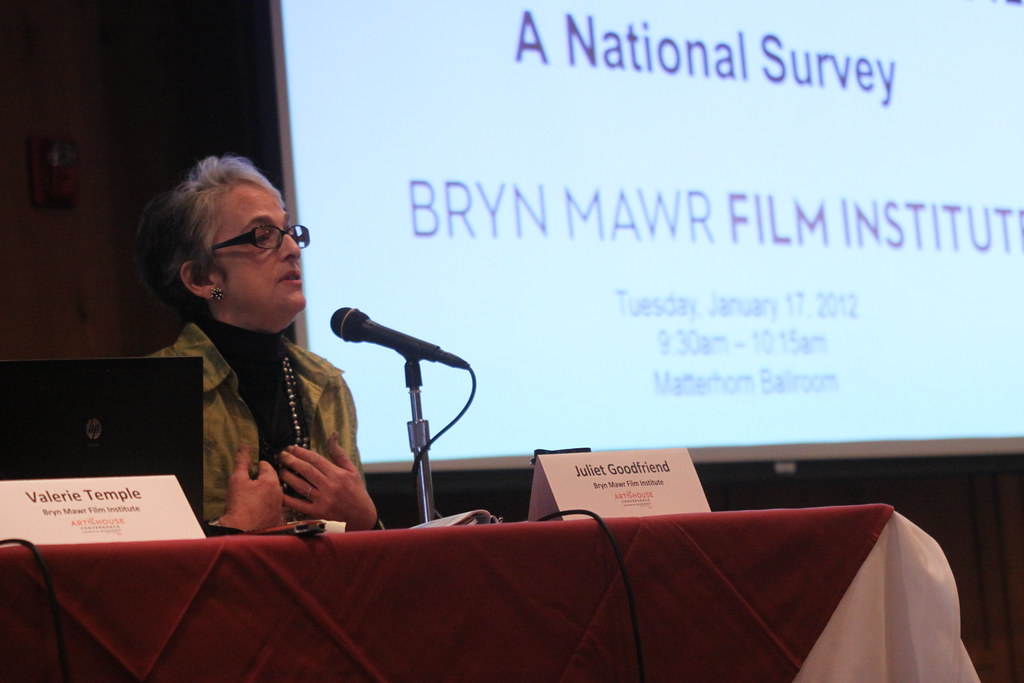Brief and Definitely Sweet
By Diane Mina Weltman, BMFI Guest Blogger
And the Oscar goes to...
That familiar pregnant pause on Oscar night gives viewers one more chance to silently choose the winner before it is revealed. Up until that moment, who will win Best Actor and Actress, Best Director and Best Picture are topics on moviegoers’ tongues for weeks before the Academy Awards ceremony.
But when is the last time you heard someone argue the finer points of what animated short film will capture the golden statue? Thanks to some clever marketing, the likelihood of just such a conversation is greater than ever as Oscar’s lesser known contenders have become more accessible to filmgoers.
Bryn Mawr Film Institute (along with other area art cinemas) is screening three categories of Oscar-nominated films that otherwise would go unnoticed by the general public. Separate screenings of the nominated live action shorts, animated shorts, and documentary shorts are being shown to better acquaint movie fans with these time-condensed genres. ShortsHD opened up this annual screening practice in 2005 and audiences have jumped at the chance to learn more about entries in these genres.
As a film enthusiast, seeing them makes me feel like an Oscar insider.
The animated short films emotionally transported me back to my Saturday-morning-cartoon-filled youth. I watched transfixed at the colorful, whimsical parade of images floating across the screen. The cartoon analogy ended there, however, because these films swim in sophisticated waters. Themes of isolation, hope, the environment, parental expectations, and more are interpreted in broad color spectrums using minimal dialogue.
The notable differences between each animated short film emphasize the endless creative options filmmakers have available today to realize their vision.
 |
| "Dimanche/Sunday", directed by Patrick Doyon |
Two Canadian entries, "Dimanche/Sunday" and "Wild Life", use the vast Canadian landscape as backdrop to their stories. A young boy and his routine weekly visit with relatives is juxtaposed with a speeding train that literally shakes everything around it as it frequently passes by the sparse homes in "Dimanche". No dialogue is used as the boy’s understated isolation and childhood ennui are bracketed by oversized adults and the overpowering locomotive. Life is moving too fast and loud on the outside while the child’s world reflects a slow, quiet interior. The “T”-shaped feet drawn on every character made me chuckle and created a cartoonish style to the black and white short.
 |
| "Wild Life", directed by Amanda Forbis and Wendy Tilby |
"Wild Life"’s sweeping vistas of softly colored quilt-like images make up the countryside where a young adventurous man of means sets off to be a gentleman farmer. With an overly romanticized view of his new surroundings, the young dandy is a curiosity to his few rural neighbors as well as a disappointment to his entitled father. He realizes the gravity of his choice as winter approaches and he literally succumbs to its overwhelming power. It reminded me of the 2007 feature film Into the Wild and how an untamed world can crush the most curious of souls.
 |
| "A Morning Stroll", directed by Grant Orchard and Sue Goffe |
A lone, unsuspecting chicken saunters along the same urban street in 1959, 2009, and 2059 in "A Morning Stroll". While the chicken follows the same path, hops up several steps, pecks on the same front door to gain entrance, nothing is the same around him. The nonplussed capon travels through three vastly different scenarios before he reaches his destination, making this stark short film the most rambunctious of all the contenders. The bird’s journey is short, but each time period presents its own brand of danger and dark forces, giving a pointed view of humanity’s decline over time. The bird reminded me of a much slower, plumper version of the beloved Looney Tunes character, the Road Runner, as things and people explode around him while he casually continues on his way.
"La Luna", Disney’s Pixar Studios offering, presents a child’s wide-eyed wonder as he helps his father and grandfather harness the moon to do some lunar clean up. The threesome climb a ladder into space to sweep up the sparkling glass stars covering the moon. Both men rediscover the magic of their duties as they watch the youngster embrace the enchanted lunar surface. Moonlight and starlight illuminate the human warmth in this sweet, multi-generational tale.
 |
| Pixar's "La Luna", directed by Enrico Casarosa |
My favorite of the bunch, however, was "The Fantastic Flying Books of Mr. Morris Lessmore". We meet the bookish Mr. Morris as a hurricane-like wind blows him and his book stacks off an iron-railed porch in New Orleans (a Katrina reference perhaps?) and sends him into a world of life-like books. He hesitantly enters a wondrous home library where books dance and play with exuberance and he learns to embrace their whimsy. Books as birds strike the perfect chord as they excitedly flutter when Mr. Morris gives them attention. The film demonstrated for me how we, as readers, are transported by books, if we just allow ourselves to become lifted into their worlds.
 |
| "The Fantastic Flying Books of Mr. Morris Lessmore", directed by William Joyce and Brandon Oldenburg |
Three additional films titled "Amazonia", "Skylight", and "Nullarbor" rounded out the animated short offerings and added a rich dimension to the whole experience. You can bet I won’t be getting popcorn out of the microwave this Sunday when the Oscar for Best Animated Short Film is about to be presented.
This year I’ll whisper my personal choice, like any other Oscar insider.
Diane Mina Weltman is a BMFI member who enjoys attending performing and visual arts events and writing about them. Check out her blog, A Subject for Consideration.





















